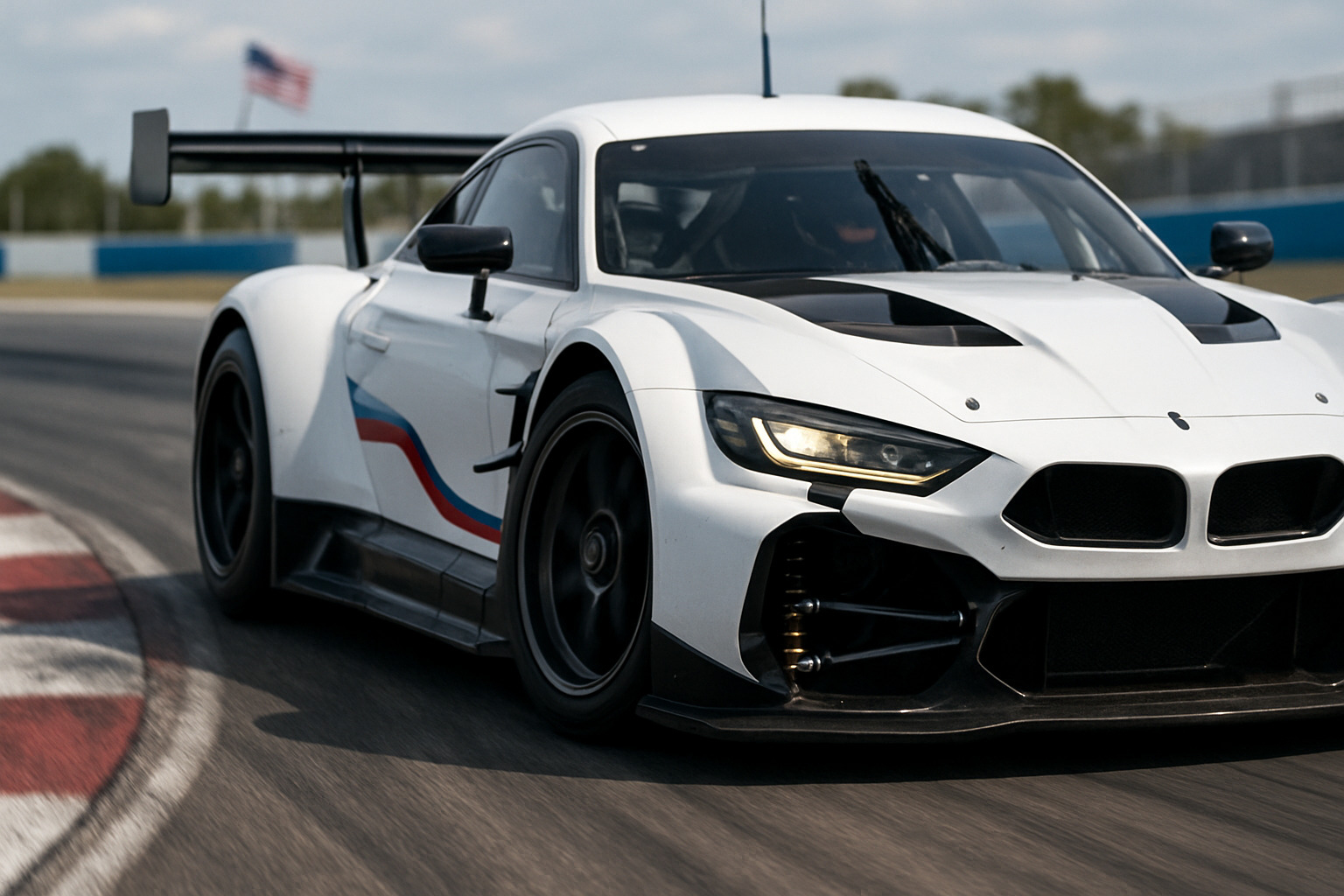Race Car Suspension Tuning: 10 Powerful Tips for 2025 Success
Why Race Car Suspension Tuning Makes or Breaks Your Lap Times
Race car suspension tuning is the art and science of adjusting your car’s springs, dampers, and geometry to maximize tire grip and minimize lap times. But here’s what most drivers get wrong: they think expensive parts equal instant speed.
Quick Answer: Essential Race Car Suspension Tuning Steps
1. Set clear goals – Define target lap times and handling balance
2. Create a baseline – Record all current settings before changes
3. Use proper tools – Tire pyrometer, pressure gauge, setup sheets
4. Change one thing at a time – Springs, then dampers, then alignment
5. Test and log everything – Track lap times and driver feedback
6. Focus on tire contact – Keep rubber on the road under all conditions
As suspension expert Carroll Smith puts it: “The best suspension components don’t guarantee optimal performance.” The difference between a fast car and a winning car isn’t the parts list – it’s understanding how every adjustment affects tire contact and grip.
The brutal truth? Even with top-shelf coilovers and racing shocks, you’ll struggle without a systematic approach. Professional teams spend countless hours testing because small changes create big differences. A simple spring rate adjustment can shave seconds off your lap times, while the wrong damper setting can make your car unpredictable and slow.
Your suspension has one job: keep your tires glued to the track. Everything else – comfort, aesthetics, cost – comes second. When you nail the setup, your car becomes an extension of your driving instincts. Miss the mark, and you’ll fight the car instead of the competition.
This guide breaks down the complex world of suspension tuning into simple, actionable steps. No engineering degree required – just patience and the right process.

Define the Goal & Build Your Baseline
Picture this: you’re at the track, wrench in hand, ready to transform your car into a corner-carving machine. But here’s where most drivers go wrong – they start turning bolts without knowing where they’re headed.
Race car suspension tuning without clear goals is like driving blindfolded. You might get lucky, but you’ll probably end up in the weeds. Professional teams spend hours defining objectives before making a single adjustment, and there’s wisdom in that approach.
Think of your suspension setup as a three-way conversation between you, your car, and the track. Without knowing what you want to say, you’ll end up with mechanical mumbling instead of automotive poetry.
Why a Clear Goal Matters
Your suspension goals shape every decision you’ll make. Chasing those last few tenths in a sprint race? Building confidence for your first track day? Planning a grueling endurance stint? Each scenario demands different compromises.
Here’s the reality check that stings: you can’t have it all. A setup that delivers blistering lap times might leave you exhausted after 20 minutes. Conversely, a comfortable cruiser won’t set any lap records.
The magic happens when you choose your trade-offs deliberately. For sprint racing, you might accept a harsh ride that maximizes grip for those crucial minutes. For endurance events, you’ll sacrifice some peak performance for consistency over hours of driving.
Consider what matters most for your situation. Maximum grip calls for stiff springs, aggressive camber, and minimal ride height. Predictable handling means finding that sweet spot where the car telegraphs its intentions clearly. Tire longevity requires moderate temperatures and even wear patterns. Driver comfort keeps you fresh for longer stints.
As one seasoned racer puts it: “Sometimes a predictable car beats a fast car. Confidence lets you push harder than raw grip ever will.”
Creating a Repeatable Baseline Sheet
Professional teams maintain detailed logbooks because memory fades, but data lives forever. Your baseline sheet becomes your safety net when tuning experiments go sideways.
Start by documenting every measurable aspect of your current setup. Ride heights at specific reference points, spring rates and preload settings, damper clicks for compression and rebound. Record your alignment angles – camber, caster, and toe. Note tire pressures both cold and hot, plus corner weights if you have access to scales.
But numbers only tell half the story. The human element matters just as much. How does the car feel through corner entry – pushy, neutral, or tail-happy? What’s the mid-corner balance like when you’re committed to a turn? Can you get on the throttle confidently at corner exit? Does the car feel stable under braking?
Document your initial impressions honestly. Rate your confidence level. Note any quirks or surprises. This becomes your North Star when aggressive changes leave you slower and confused.
Your baseline sheet serves as an insurance policy. When that “brilliant” spring rate change makes your car undriveable, you can return to known-good settings and start fresh. Trust me, every tuner has been there – lost in a maze of adjustments with no clear path home.
The best part? Once you establish this process, each track session builds on the last. Your setup sheets become a library of knowledge, showing what works where and why. That’s how good drivers become great ones.
Know Your Suspension Components Inside & Out
Understanding your suspension components isn’t about memorizing engineering textbooks – it’s about knowing which tool fixes which problem. Let’s break down the key players and their roles in your handling symphony.

Tires: The Real Springs in Disguise
Here’s a mind-bender: your tires are actually springs with their own spring rates determined by sidewall stiffness and air pressure. This isn’t just trivia – it fundamentally changes how we approach suspension tuning.
Racing tires typically operate in a narrow temperature window for peak grip. For high-performance summer tires and semi-slicks, that sweet spot usually falls between 160-220°F. Within this range, we want the inner third of the contact patch running 10-20°F hotter than the middle and outer thirds – this indicates optimal camber settings for maximum grip.
The slip angle relationship is equally critical. Peak cornering grip occurs at slip angles around 6-10 degrees, but here’s the catch – you want to drive on the front side of that curve, not the back side. Operating beyond peak slip angle gives you less grip and dramatically increased tire wear.
Tire pressure affects everything from contact patch shape to suspension feel. As one tuner noted, “Starting at 25 psi and rising to 35 psi after 30 laps due to temperature increase” completely changes your effective spring rates and handling balance.
Scientific research on high-performance tires provides deeper insights into compound behavior and temperature management strategies.
Geometry Essentials
Suspension geometry controls how your tires contact the track through every phase of cornering, braking, and acceleration. Get this wrong, and no amount of spring or damper tuning will save you.
Camber is your primary tool for maximizing tire contact during cornering. Negative camber compensates for the positive camber gain that occurs on the outside tire under lateral load. Most race cars run 2-4 degrees negative camber, but the exact amount depends on your specific suspension geometry and tire characteristics.
Caster affects steering feel and self-centering. Positive caster creates the self-centering force that makes your steering wheel return to straight-ahead after cornering. However, excessive positive caster can eject too much cross weight when turning, reducing corner exit grip.
Toe settings influence both straight-line stability and turn-in response. Front toe-out quickens turn-in but reduces straight-line stability. Rear toe-in adds stability for rear-wheel-drive cars, while rear toe-out can help rotate the car and reduce understeer.
The roll center and center of gravity relationship determines how weight transfers during cornering. As one expert explained, “The lateral position of the moment center has a greater effect on roll angle than vertical height.” Understanding this relationship helps predict how spring and anti-roll bar changes will affect handling balance.
Tools & Data: Your Suspension Tuning Toolbox
You wouldn’t perform surgery with a butter knife, and you can’t properly tune race car suspension with gas station tools and wishful thinking. The difference between guessing and knowing lies in having the right equipment and using it systematically.
Think of your toolbox as an investment in lap times. Every professional team carries the same basic tools because they work. You don’t need a million-dollar budget, but you do need tools that give accurate, repeatable measurements.
Must-Have Trackside Gear
Your tire pressure gauge might be the most important tool in your kit. Not the cheap plastic one from the auto parts store – invest in a quality digital gauge that’s accurate to half a pound. Why does this matter? Because tire pressure changes dramatically with temperature, and a 2-psi difference can completely alter your car’s handling balance.
A tire pyrometer becomes your crystal ball for understanding what’s happening at the contact patch. This probe-type thermometer reads tire temperatures across the tread surface, telling you if your camber angles are correct. When the inner third of your tire runs 10-20°F hotter than the outer sections, you’ve found the sweet spot.
Toe plates might look simple, but they solve more handling problems than any other single tool. Many cars that feel twitchy or unstable simply have incorrect toe settings that could be fixed in minutes with proper measurement. These lightweight plates travel easily and work on any flat surface.
Your camber and caster gauge needs to be digital for racing accuracy. The difference between 2.5 and 3.0 degrees of negative camber might not sound like much, but your lap times will notice. Small changes in these angles create surprisingly large handling differences.
Ride height measurement sticks ensure your setup stays consistent between sessions. Pick specific measurement points on your car and always measure from the same spots. Consistency here prevents mysterious handling changes that aren’t actually mysterious at all.
Never underestimate a good setup notebook. As one experienced tuner put it: “Scribbling setup notes on a napkin that you’ll later blow your nose with isn’t the right approach.” Your memory will fail you, especially when you’re tired and focused on driving fast.
More info about Race Car Telemetry Systems can take your data collection to the next level beyond these essential basics.
Logging Like the Pros
Here’s what separates systematic tuning from throwing darts in the dark: professional teams document everything. They don’t have better memories than you – they just write things down religiously.
Your session conditions matter more than you think. Track temperature, air temperature, humidity, and wind all affect how your car handles. What worked perfectly on a cool morning might feel terrible in the afternoon heat. Record these details so you can spot patterns over time.
Document every aspect of your car’s setup before making changes. All suspension settings, tire pressures, fuel load, and any recent modifications need to go in your logbook. When you find a magical setup six months later, you’ll want to recreate it exactly.
Performance data tells the objective story that feelings sometimes miss. Record your lap times, sector times, and tire temperatures after each session. Your fastest lap might have come from a setup that felt terrible to drive – or vice versa.
Driver feedback captures the subjective side that data can’t measure. Note your confidence level, specific handling issues, and how fatigued you felt. Sometimes a slower setup that builds driver confidence produces better race results than a theoretically faster but unpredictable setup.

Track your tire temperature patterns like a detective following clues. Consistently hot outer edges mean you need more negative camber. Hot inner edges suggest too much negative camber or insufficient tire pressure. These patterns tell the story of how your suspension is working – you just need to learn the language.
Remember what the pros know: “More data is better than no data. Even if you don’t use it immediately, a future tuner or helper might find gold in those notes.” Your logbook becomes more valuable with every session, building a database of knowledge specific to your car and driving style.
Step-By-Step Race Car Suspension Tuning Process
Now we get to the meat and potatoes. Race car suspension tuning follows a logical progression that prevents you from chasing your tail around the paddock. Professional teams use this systematic approach because it works.
Establishing Your Race Car Suspension Tuning Baseline
Before making any changes, establish your current performance baseline. This means driving consistent laps and recording both objective data and subjective feel.
Run at least 5-10 laps at your current pace, focusing on consistency rather than heroics. Record lap times, tire temperatures at three points across each tire, and detailed notes about handling characteristics in different corner phases.
Pay special attention to corner entry balance. Does the car push (understeer) or step out (oversteer) when you first turn in? This initial behavior often determines your entire cornering line and confidence level.
Check your tyre temps immediately after your baseline runs. The temperature spread across the contact patch reveals whether your static camber settings are working dynamically. We want that inner third running 10-20°F hotter than the outer sections.
Document everything. As one experienced tuner noted, “Recording baseline suspension values before any adjustments” prevents you from getting lost in the adjustment maze.
Adjusting Springs, Dampers & Anti-Roll Bars
Spring rates form the foundation of your suspension tune. A general rule suggests approximately 500 lb/in springs per corner for a 2,000 lb race car, but this varies dramatically based on aerodynamic downforce, track surface, and desired handling balance.
Understanding wheel rate versus spring rate is crucial. The installation ratio – how much the spring moves relative to wheel movement – affects the effective wheel rate. A spring with a 2:1 motion ratio effectively doubles the spring rate at the wheel.
High and low-speed compression damping controls different aspects of handling. Low-speed compression (0-3 inches per second) affects body control during cornering and braking. High-speed compression manages impacts from curbs and bumps.
Rebound damping controls how quickly the wheel returns to the track after compression. Too little rebound allows the car to oscillate; too much prevents the tire from following track irregularities.
Anti-roll bar stiffness provides a powerful tuning tool for handling balance. Stiffer front bars reduce understeer by limiting front roll and maintaining camber. Stiffer rear bars reduce oversteer by limiting rear roll.
The key insight: “If your car tends to understeer through every turn, soften the front sway bar and increase stiffness in the rear to improve front traction.”
Scientific research on chassis dynamics provides deeper theoretical understanding of these relationships.
Alignment Tweaks for Grip & Tire Life
Alignment adjustments offer the biggest bang for your buck in race car suspension tuning. Small changes in camber, caster, and toe create immediately noticeable handling differences.
Camber sweep testing reveals the optimal static camber for your specific tire and track combination. Start with moderate negative camber (around -2 degrees) and adjust based on tire temperature readings. The goal is achieving that ideal temperature spread across the contact patch.
Caster self-align affects steering feel and stability. Insufficient caster makes the car wander on straights and feel vague in corners. Excessive caster creates heavy steering and can upset the car under braking.
Toe stability balances straight-line stability with turn-in response. Front toe-out quickens initial turn-in but can make the car nervous on straights. Rear toe-in stabilizes the rear end but can increase understeer.
Follow the professional sequence: caster first, then camber, finally toe. Each adjustment affects the others, so working in order prevents confusion.
More info about Advanced Car Driving Techniques can help you better interpret how alignment changes affect car behavior.
Iterative On-Track Testing
A/B testing is your friend in suspension tuning. Make one change, test it thoroughly, then decide whether to keep it or revert to the previous setting. This methodical approach prevents the common mistake of making multiple changes simultaneously.
Monitor lap-time variation as much as outright lap times. A setup that produces consistent times with good driver confidence often beats a theoretically faster setup that’s unpredictable.
Don’t be afraid of reverting to baseline when changes don’t work. As one experienced tuner advised, “Sometimes you have to take a step backward to move forward.” Your baseline sheet makes this process painless.
Troubleshooting & Adapting to Track Conditions
Racing would be simple if tracks stayed the same and cars behaved predictably. But real-world race car suspension tuning means dealing with sudden rain showers, mysterious handling gremlins, and the clock ticking toward your next session. Here’s how to diagnose problems fast and adapt when conditions throw you a curveball.

Common Handling Issues & Quick Fixes
When your car starts misbehaving, resist the urge to change everything at once. Most handling problems have straightforward causes – and equally straightforward fixes.
Entry push (understeer) is the most common complaint we hear. Your car feels like it wants to plow straight ahead instead of turning. The quick fix? Try reducing front low-speed compression damping to let the front end load up better, or soften that front anti-roll bar to give your front tires more grip.
Sometimes the issue isn’t what you think it is. As one experienced mechanic told us, “Disconnecting the sway bar during test runs can reveal baseline suspension feel” and help you figure out whether the problem is your springs and dampers or just an overly aggressive anti-roll bar.
Mid-corner push feels different – the car turns initially but then wants to drift wide halfway through the corner. This usually points to deeper issues with your spring rates or roll center position. Try dropping your front spring rates slightly or adjusting front ride height to change how weight transfers.
Exit oversteer can be both thrilling and terrifying, but it’s definitely slow. When the rear end wants to step out under acceleration, increase your rear rebound damping to control that weight transfer, or stiffen those rear springs to give you a more stable platform when you’re getting back on the throttle.
Brake instability makes every corner entry an trip – and not the good kind. If your car darts left or right under braking, check your front toe settings first. Uneven toe is often the culprit. If that’s not it, try increasing front compression damping to better control weight transfer.
Ride harshness that beats you up usually comes from being too aggressive with compression damping or running spring rates that are simply too stiff for your track surface. A comfortable driver is often a faster driver.
Circuit-Specific Adjustments
Every track has its own personality, and your suspension setup should reflect that. What works perfectly at a flowing road course might leave you struggling at a tight autocross.
Tight autocross courses reward quick reflexes and minimal body roll. Crank up that front anti-roll bar stiffness and consider adding some front toe-out for snappier turn-in response. You’re not going fast enough for stability to be a major concern.
Flowing GP tracks with sweeping high-speed corners demand the opposite approach. Stability becomes paramount when you’re carrying serious speed through long corners. Dial back any aggressive toe-out settings and make sure you have adequate high-speed compression damping to keep things planted when the track gets wavy at 120 mph.
Smooth versus rough asphalt requires completely different philosophies. Smooth tracks let you get away with murder – stiffer springs, lower ride heights, and aggressive settings that maximize your aerodynamic package. Rough tracks demand compliance above all else. Your tires need to follow every bump and dip to maintain contact.
Downforce loading changes everything at speed. A car that feels perfect puttering around at 60 mph might be bottoming out violently at 120 mph due to aerodynamic loads pushing down. Factor this into your spring rate selection, especially if you’re running significant aero.
Temperature swings throughout race day can completely change your tire behavior. Those hot afternoon sessions might require starting with 2-3 psi lower cold pressures to account for thermal expansion. What worked in cool morning practice might be completely wrong by the time qualifying rolls around.
When to Rebalance Comfort, Stability & Performance
The eternal triangle of suspension tuning forces tough choices. You can optimize for any two of these, but the third will suffer. Knowing when to shift your priorities separates good tuners from great ones.
Driver fatigue becomes a real factor in longer races. A setup that feels tolerable for a 20-minute sprint might leave you exhausted and slow after two hours of endurance racing. Don’t be afraid to soften your damping slightly for longer events – a comfortable driver who can maintain pace often beats the hero who’s fighting the car.
Tire wear patterns tell the truth about whether your setup is sustainable. Excessive inside edge wear screams that you’re running too much negative camber or insufficient tire pressure for your specific conditions. Speed means nothing if your tires are done after half the race distance.
Endurance stints often reward the tortoise over the hare. A conservative setup that maintains consistent performance over long runs frequently beats a theoretically faster setup that falls off after a few laps. Think about the big picture.
Sprint races flip this equation completely. You only need the car to survive 15-30 minutes, so you can be much more aggressive with your settings. Push those limits – you’re not trying to make anything last.
The weather can change everything in minutes. Rain transforms your carefully crafted dry setup into a handful of problems. Don’t be afraid to make dramatic changes when conditions demand it.
More info about Innovative Racing Technology explores how modern systems help balance these competing demands and adapt to changing conditions.
Frequently Asked Questions about Race Car Suspension Tuning
Let’s tackle the most common questions that come up when you’re diving into race car suspension tuning. These are the real-world challenges that every racer faces, whether you’re setting up your first track car or fine-tuning a seasoned race machine.
How do I pick the right spring rates?
The math gives you a starting point, but real-world spring selection goes way beyond simple calculations. Take your vehicle weight and divide by four corners – a 2,000 lb car suggests roughly 500 lbs of support per corner. But here’s where it gets interesting.
Aerodynamic downforce completely changes the game. At 100 mph, you might generate 500 lbs of additional downforce, effectively doubling your spring requirements. What feels perfect in the paddock might bottom out on the back straight.
Track surface matters more than most people realize. Smooth tracks let you run stiffer springs for maximum aerodynamic efficiency and precise control. Rough tracks demand compliance to keep your tires glued to the pavement instead of bouncing over every bump.
Driver preference often trumps theoretical perfection. Some drivers extract more speed from a slightly softer setup they can drive with confidence than from a theoretically optimal setup that makes them nervous.
Here’s a pro tip: you can achieve the same static support with different spring combinations. For example, 250 lb/in springs with 2 inches of preload provide identical static support as 500 lb/in springs with minimal preload. But they behave completely differently when the track gets bumpy or you hit the brakes hard.
What order should I adjust alignment angles?
Professional teams follow a specific sequence for good reason: caster first, camber second, toe last. Each adjustment affects the others, so working in this order saves you from chasing your tail around the setup sheet.
Start with caster to establish proper steering feel and self-centering force. Insufficient caster makes your car feel vague and unstable, like driving on ice. Too much caster creates heavy steering that’ll wear you out during long stints and can upset your chassis balance under hard braking.
Move to camber once your caster feels right. This is where tire temperature feedback becomes your best friend. You’re aiming for that sweet spot where the inner third of your contact patch runs 10-20°F hotter than the outer sections. Most race applications need 2-4 degrees of negative camber, but let your tire temps guide the final decision.
Save toe adjustments for last. Toe settings interact heavily with your bump and rebound damping, so you’ll likely need to revisit toe after any damper changes anyway. Front toe-out quickens turn-in response but can make your car nervous on straights. It’s all about finding the right compromise for your specific track and driving style.
How can I use tire temperatures to guide changes?
Think of tire temperatures as your suspension setup’s report card. They reveal exactly how your static settings translate to real-world tire contact when you’re pushing hard through corners.
Even temperatures across the contact patch mean you’ve nailed your camber setting. If you’re seeing this pattern consistently, resist the urge to mess with what’s working.
When you see a hot outer edge, your tire is rolling over onto its shoulder under cornering loads. You need more negative camber or higher tire pressure to keep the full contact patch working effectively.
A hot inner edge tells the opposite story – you’re running too much negative camber or insufficient tire pressure. You’re overworking the inner portion of your contact patch while the outer edge isn’t contributing much grip.
Overall temperatures running too high suggest your setup is working the tires beyond their optimal operating window. Consider softer spring rates, less aggressive alignment angles, or higher tire pressures to bring those numbers down into the sweet spot.
Overall temperatures too low might indicate you’re leaving grip on the table. This could mean insufficient downforce, overly soft spring rates, or alignment settings that are too conservative for your pace.
The timing matters as much as the numbers. Take temperatures immediately after your fastest laps, measuring at three points across each tire’s contact patch. Those patterns will guide your next setup changes and keep you moving in the right direction instead of making random adjustments.
Conclusion

Race car suspension tuning transforms from overwhelming complexity to manageable process once you understand the fundamentals. It’s not about having the deepest pockets or the fanciest equipment – it’s about following a proven system that connects every adjustment to real-world performance.
Think of suspension tuning as learning a new language. At first, all those spring rates and damper clicks seem like gibberish. But once you understand the conversation between your car, the track, and your driving style, everything starts making sense.
The most successful tuners share a few key habits. They start with crystal-clear goals rather than random tinkering. A sprint racer chasing ultimate lap times approaches setup completely differently than an endurance driver prioritizing consistency and tire life. Know what victory looks like before you touch a single adjustment.
Document everything religiously. Your setup sheet isn’t just paperwork – it’s your roadmap back to known-good settings when experiments go sideways. Professional teams maintain detailed logs because memory fades, but data endures. That baseline you establish today might save you hours of frustration next season.
The one-change rule separates systematic tuners from weekend warriors spinning their wheels. Make multiple adjustments simultaneously, and you’ll never understand which change helped or hurt. Spring rates affect weight transfer and ride quality. Dampers control how quickly things happen. Anti-roll bars fine-tune understeer and oversteer balance. Each tool has its specific job in the handling orchestra.
Your tires tell the truth about everything else. When those temperature readings show proper contact patch loading and optimal operating windows, you know your suspension is doing its job. Hot outer edges demand more negative camber. Even temperatures across the contact patch confirm you’ve found the sweet spot. Listen to what your rubber is saying.
But here’s what separates good setups from great ones: driver confidence trumps theoretical perfection. A setup that feels predictable and communicative will always be faster than one that looks perfect on paper but leaves the driver unsure about grip levels. Trust your hands and seat-of-the-pants feedback as much as your data logger.
The iterative process never really ends, and that’s part of the beauty. Track conditions evolve throughout the day. Your driving style develops with experience. Tire compounds and weather conditions change. The best tuners accept this constant refinement as part of the challenge rather than fighting against it.
Suspension tuning is fundamentally about maximizing tire contact with the track surface. Everything else – comfort, aesthetics, even cost – comes second to keeping your rubber properly planted. When you nail this relationship, your car transforms from a collection of parts into an extension of your driving instincts.
At Car News 4 You, we see suspension tuning as the perfect intersection of automotive innovation and racing performance. Whether you’re chasing club racing victories or simply want your track day car to feel more connected and responsive, these fundamentals will serve you well for years to come.
The journey from confused beginner to confident tuner takes time and patience. But every temperature reading, every setup sheet entry, and every thoughtful adjustment builds your understanding. Soon enough, you’ll be the one helping other drivers open up their car’s potential.
More info about our Resource Guides provides additional technical insights for serious racers and enthusiasts looking to dive deeper into automotive performance optimization.








2 thoughts on “Shockingly Simple Suspension Tuning Tips for Race Cars”
Pingback: How Much Does It Cost to Wrap a Car in 2025? A Complete Guide with Prices, Options, and Visuals - Car News 4 You
Pingback: Race on Sunday, Commute on Monday: Top Street Legal Race Cars - Car News 4 You
Comments are closed.